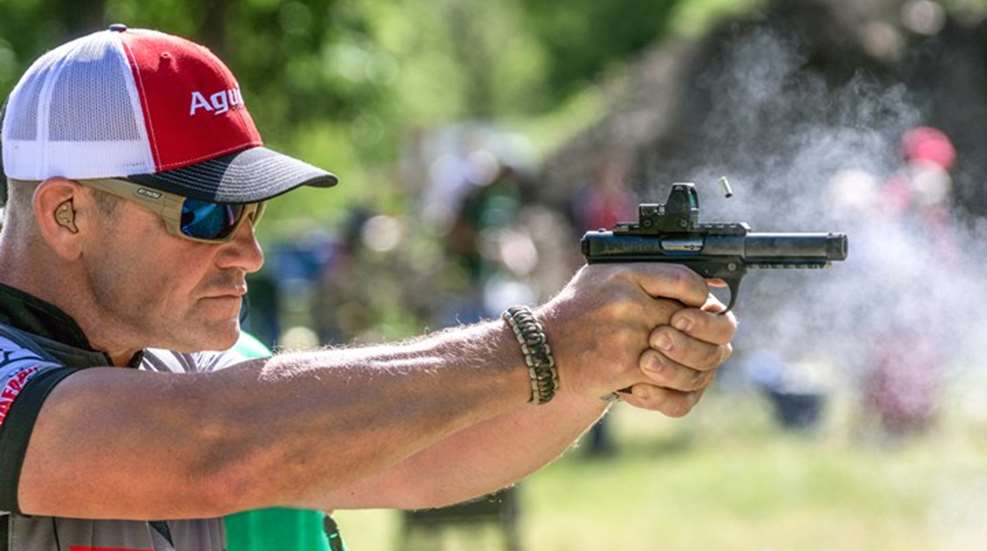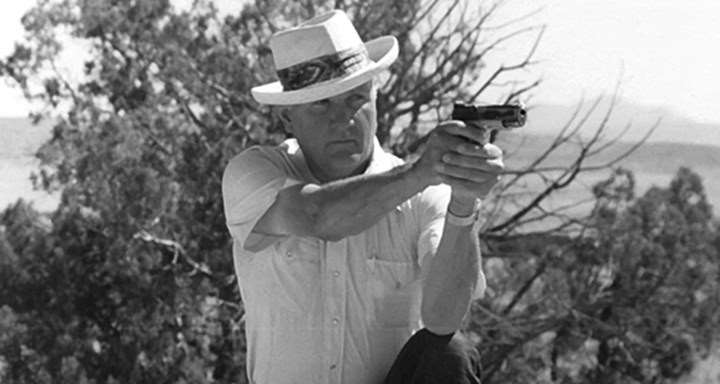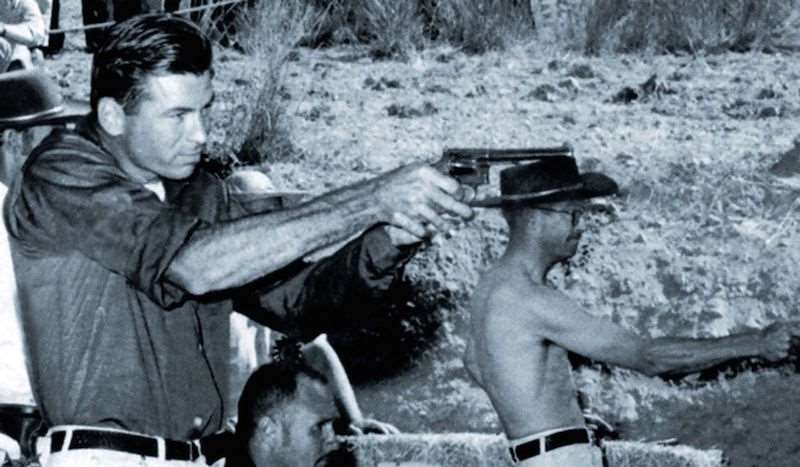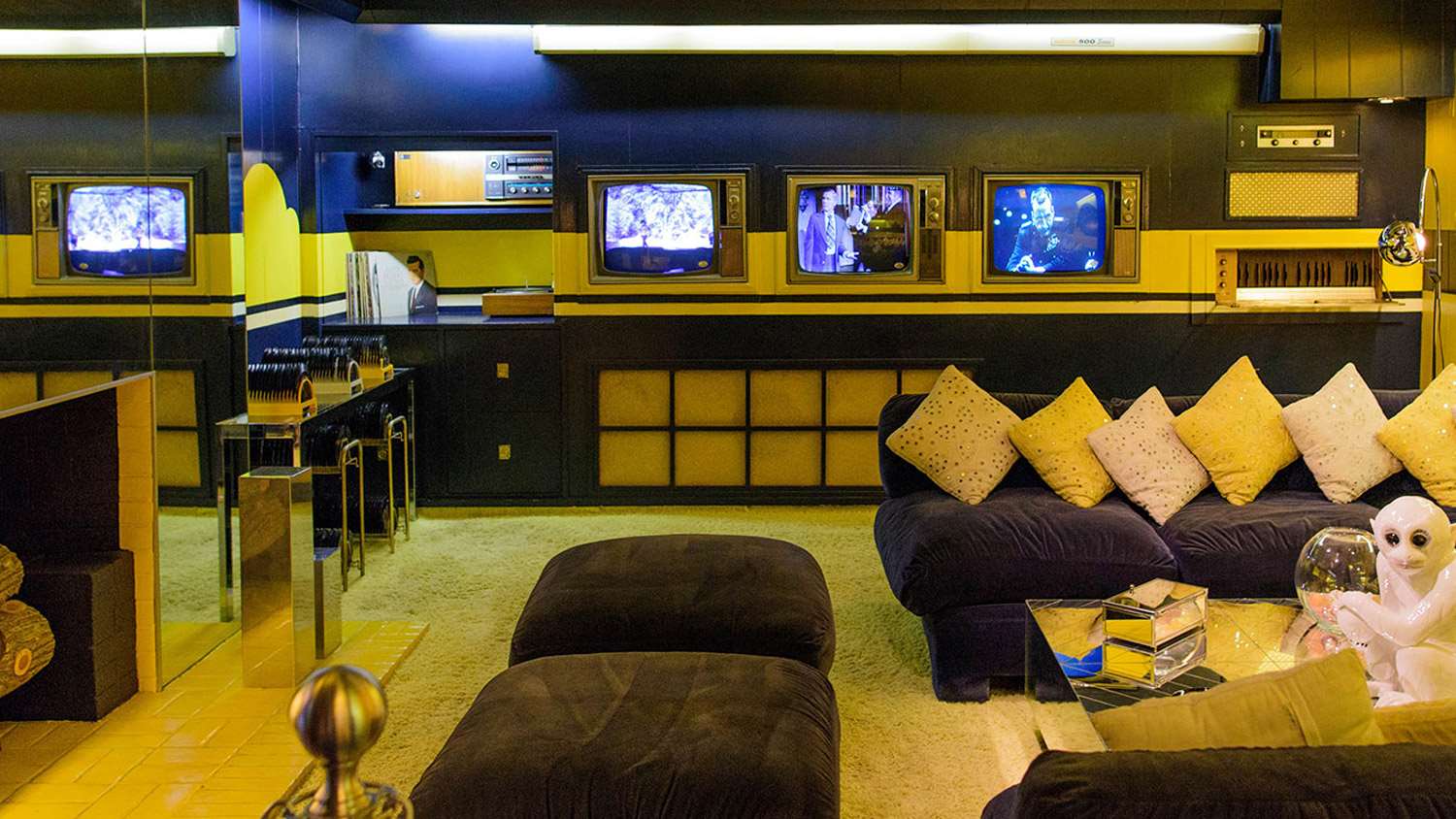
Have you ever been to Graceland, the late Elvis Presley’s home in Memphis? If so, you’ll be able to relate to what’s on my mind. During a recent conversation with a student, I was trying to explain how some older styles and techniques of shooting remind me of Graceland.
In the 1950s, Leather Slap competitions were popular and served up more than just a fun time at the range. The leading gunslingers of the day were always looking for faster and more accurate ways to shoot. Leather Slap quick draw events grew from America’s love affair with the TV westerns of that era, but the Bear Valley Gunslingers were always experimenting with more modern techniques.

Early on, the competitors primarily used point shooting. Cowboy style, single-handed, firing the pistol from the hip was popular and thought to be best-suited to their purpose. Shooters would often fire several rounds in this fashion in rapid succession, and they would still miss the 18-inch balloon targets seven yards away. Jack Weaver, an early champion, had switched to an eye-level, two-handed aimed technique. Not quite as fast, but he’s quoted as saying, “A pretty quick hit is better than a lightning-fast miss.”
This is how the Weaver stance came about. It’s a bladed stance with strong foot back, causing the shooter to have a nearly straight strong arm with a bent support arm. This created a push/pull hold of the pistol, having the support arm bent it pulled in from the front while the strong arm pushed out and forward.
Prior to Weaver’s innovative method, shooters shot the handgun with one hand. From the hip, ¾ hip, chest and chin level, they practiced anything but two-handed firing. After all, it was a hand gun and not a hands gun. The draw and or presentation of the handgun was a pump handle style of movement from a low 45-degree angle to about chin level and everything in between. Sights weren’t really used or relied on, as point shooting was supposed to be remarkably instinctive.
There are some today who still teach the Weaver stance and the push pull or, bent elbow technique. And, despite firearms being manufactured with sights for over 100 years, there are some who still feel the need to disparage their use.

From the days of single-action revolvers, to double-action revolvers, and now the modern semi-automatic pistol, we’ve come a long way. The handgun has definitely become the hands gun. Most world-class shooters utilize the modern, high, thumbs-forward grip and isosceles stance. From bolt action rifles to sub-machine guns, carbines and pistols—getting “squared up” behind the gun is agreed to be very efficient.
Feet, knees, hips and shoulders square to the target is the foundation of the modern isosceles stance. This coincides with the human startle response of squaring to the threat, widening stance and lowering our base to deal with whatever is in front of us. Presentation of the pistol is done by throwing the hands forward with both hands pushing out toward the threat. Try picturing a wrestler in a standing, start pose.
The modern high, thumbs-forward grip is more than a look. Tension or pressure on or around the pistol is created by the hands with the strong hand fingers pulling the pistol into the meat of the palm. The support hand provides side to side pressure ensuring a 360-degree lock-up. With elbows slightly flexed outward, rather than bent down, we have not only shock absorption, but increased pressure at the top of the frame of the pistol nearest the slide.
With the slide being the source of momentum of a semi-automatic pistol, we want to be as close to that axis of recoil as possible. With our grip high on the gun and our thumbs pointing forward, we gain more control. Pointing or setting those thumbs forward creates a tendon lock at the wrists. Locking the wrists helps recoil pass by, so it can be absorbed with those bent elbows.
Having arms outstretched equally with shoulders and hips forward helps the body to absorb recoil; recoil that’s going straight back from a gun straight in front of us, instead of off to one side with one other side weakened. The weak side will always give and a twist will result causing the shooter to have to muscle the gun back to the target. The laws of physics are clear—equal force means equal resistance.
So we’ve morphed from the one-handed cowboy days of hip shooting to a one-handed pump handle getting the gun up closer to the eyes. No sights used but we could at least see where the gun was pointed. Then, one day a man held a gun with two hands and actually used the sights. Success was inevitable compared to past practices and this became the “modern technique.” And for some, it still is.
It hasn’t been too terribly long that we’ve had the modern isosceles stance and high thumbs forward grip but I don’t know any ultra-successful shooter who doesn’t utilize these techniques today. A style worthy of the title of “modern technique.”

My home has high ceilings, TVs in every room, hardwood floors and a microwave. The floors are clean, the high ceilings give a feeling of space, the TV picture looks better than in real life and the microwave cooks food so fast that I can’t get the table set in time. It’s a big place, but still ideal for my tastes.
Graceland is very similar but from a different era. It was for all intents and purposes, a mansion in its day. It has floors, but most are covered with shag carpet. It has ceilings, but they’re only eight feet high. It has tube type color TV’s in every room, and there’s even a microwave—or maybe it’s a Radar Range. All of this was state of the art back then. A moment that’s frozen in history. Nice then—but I wouldn’t want to live there today.
I’m relatively certain that if the Leather Slap guys of yesteryear were still around, they’d know exactly what I’m talking about.
Read more articles by Chris Cerino:


































